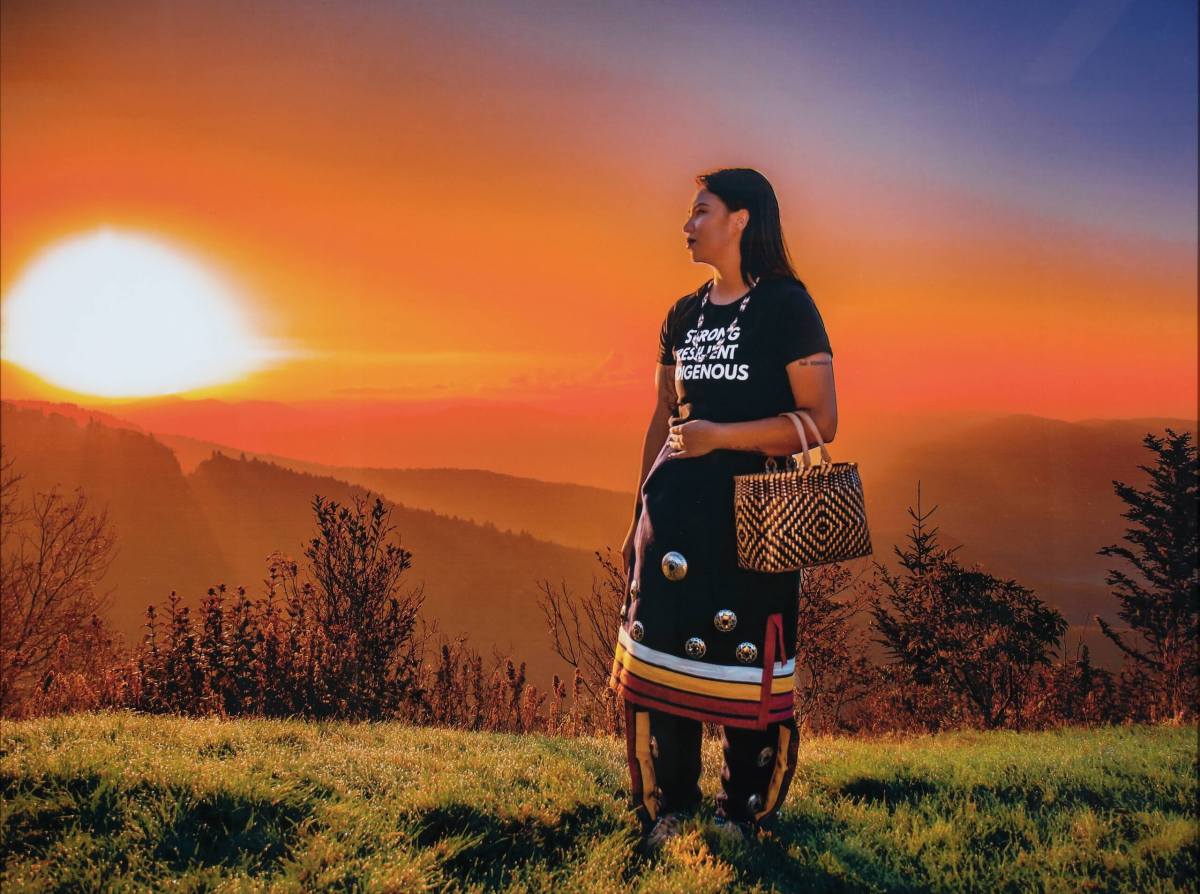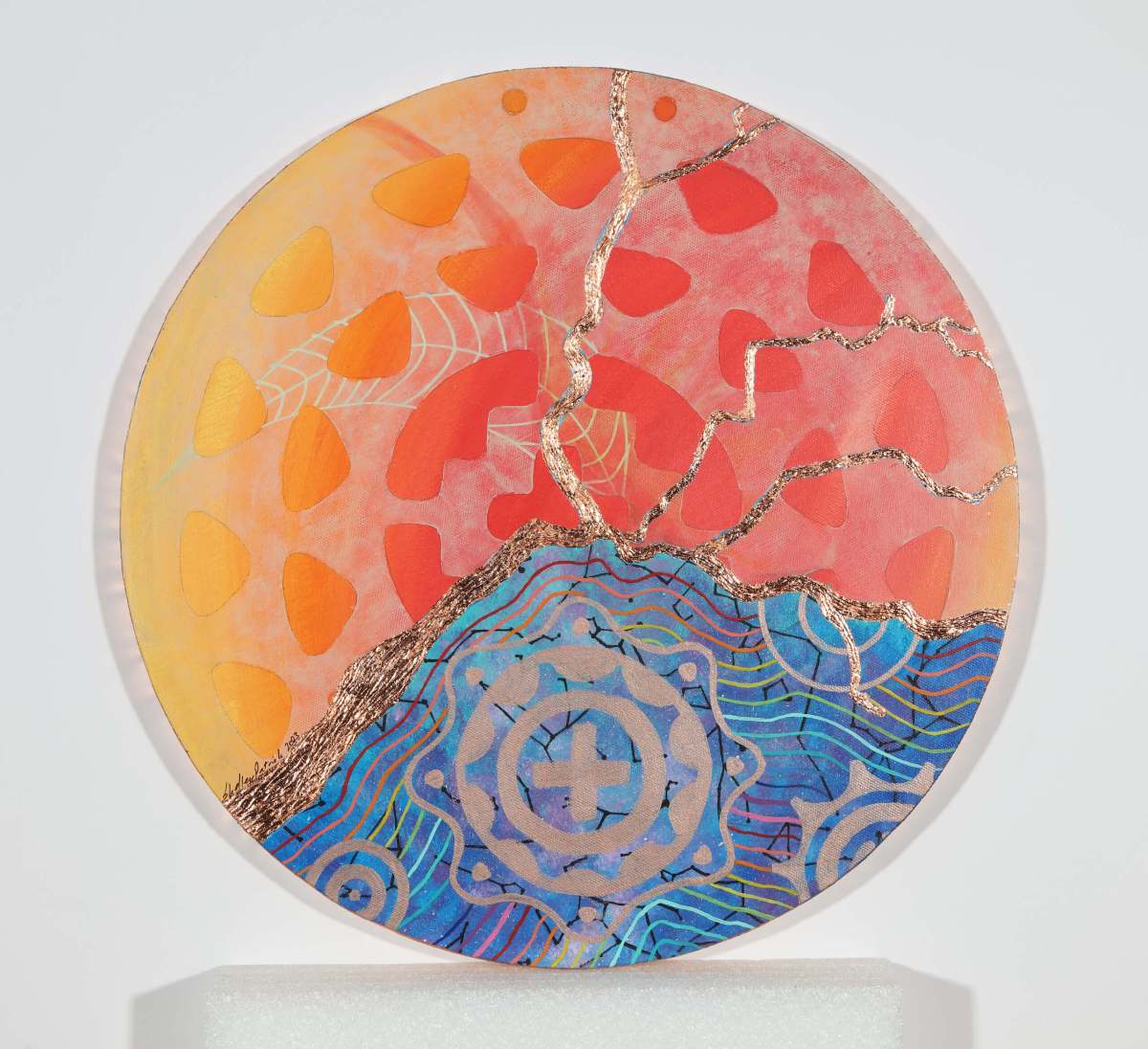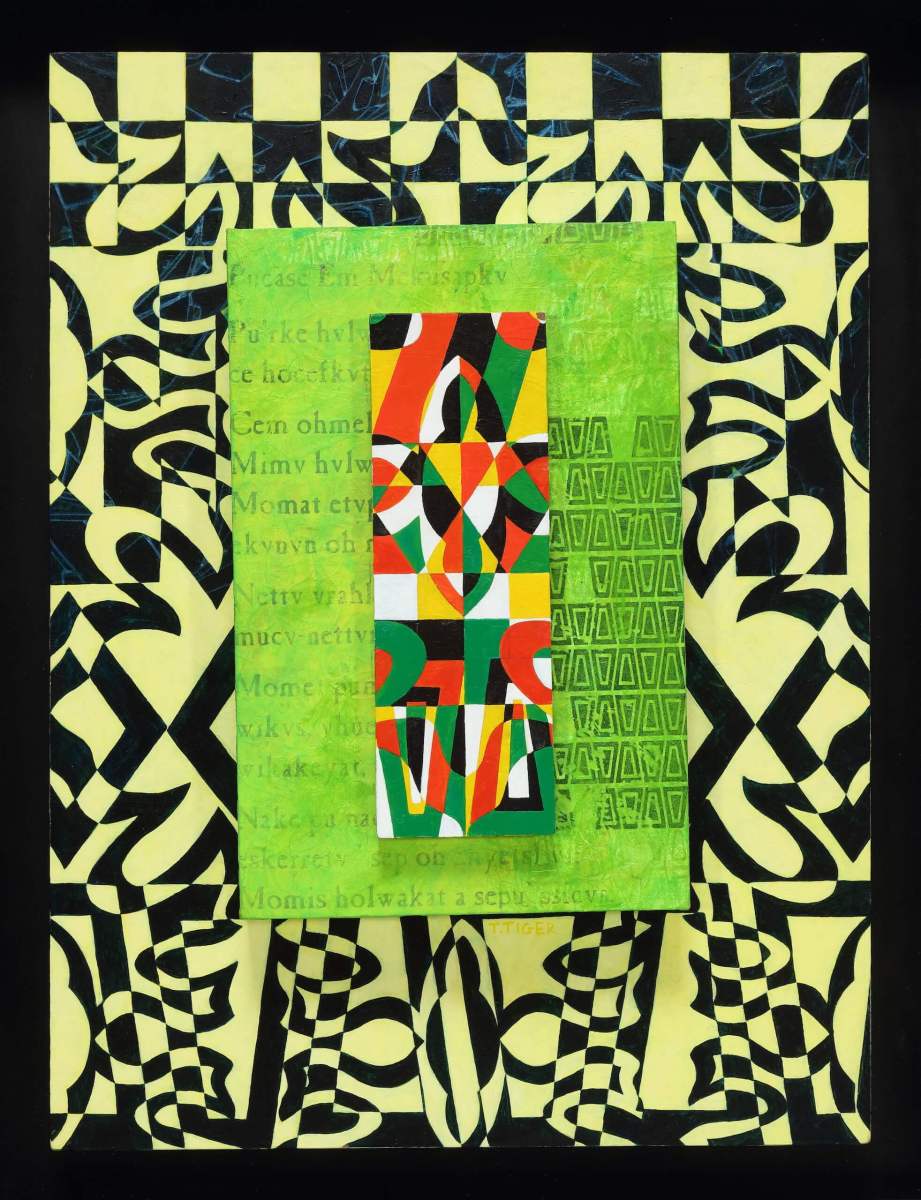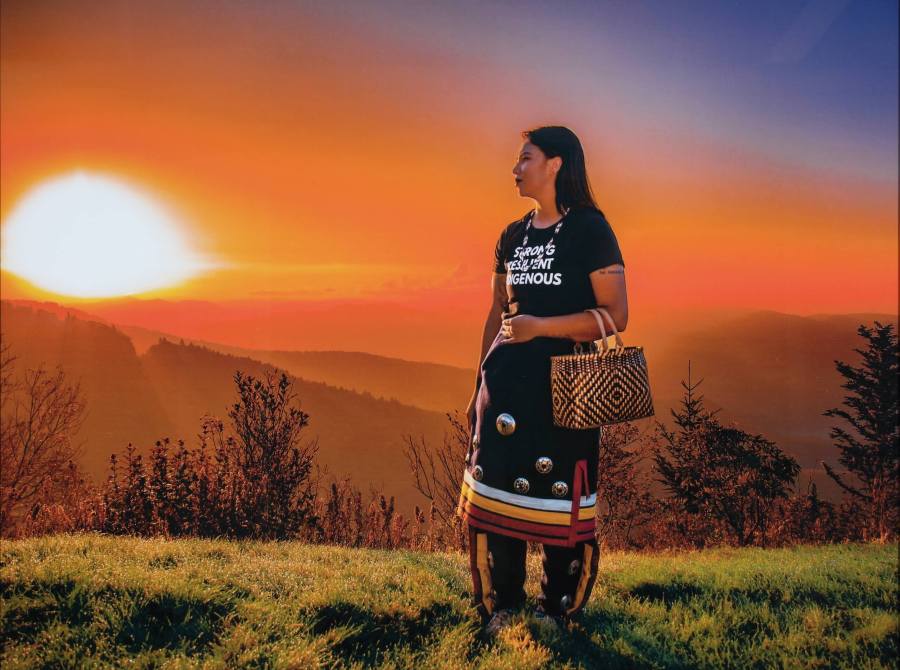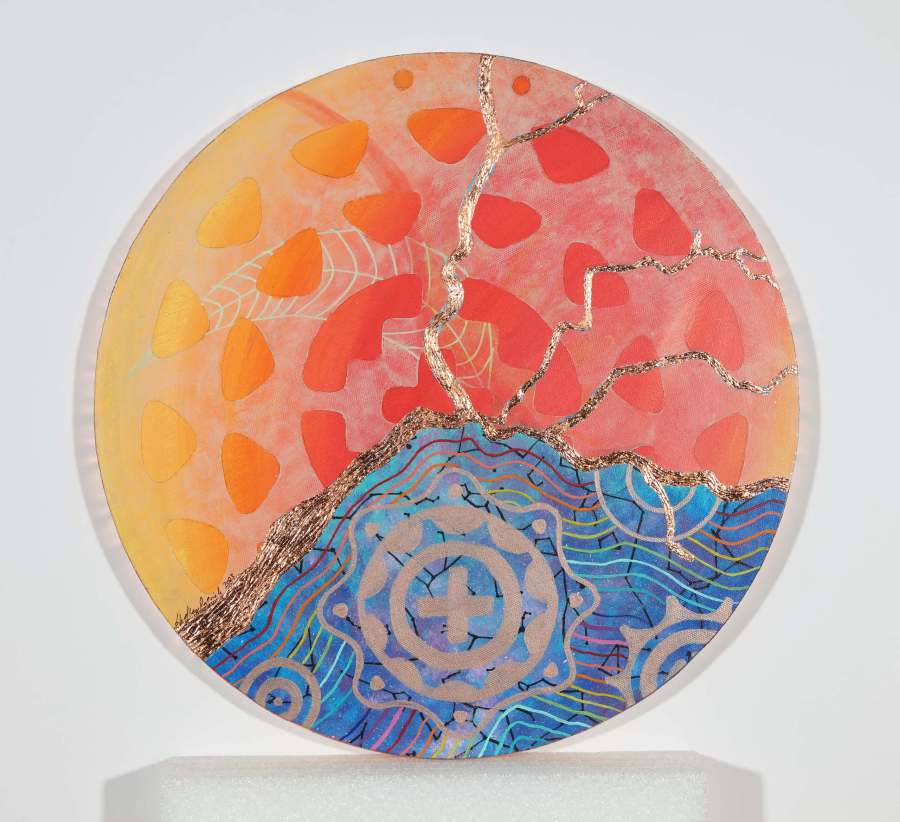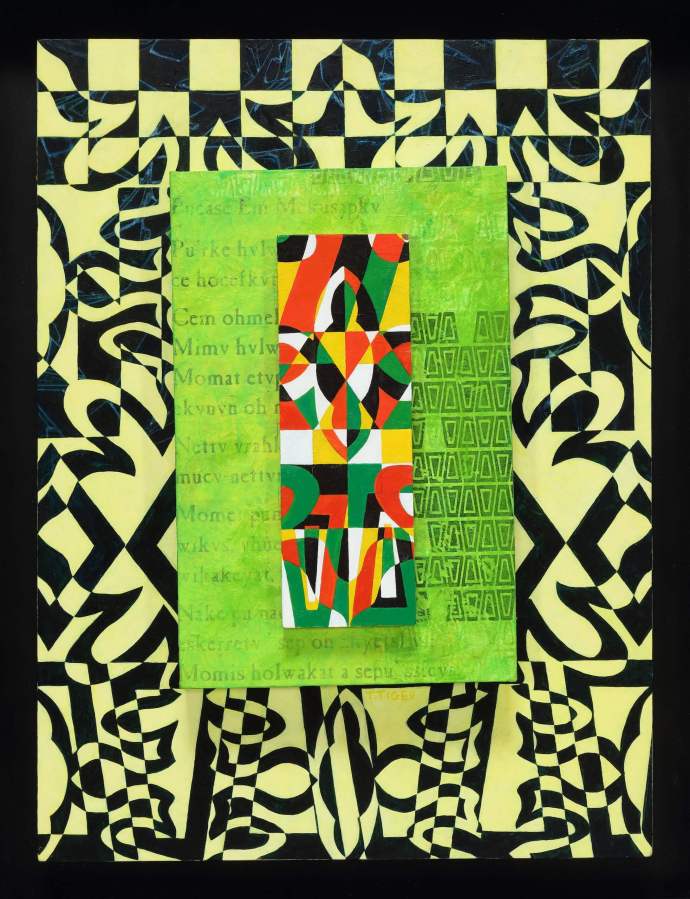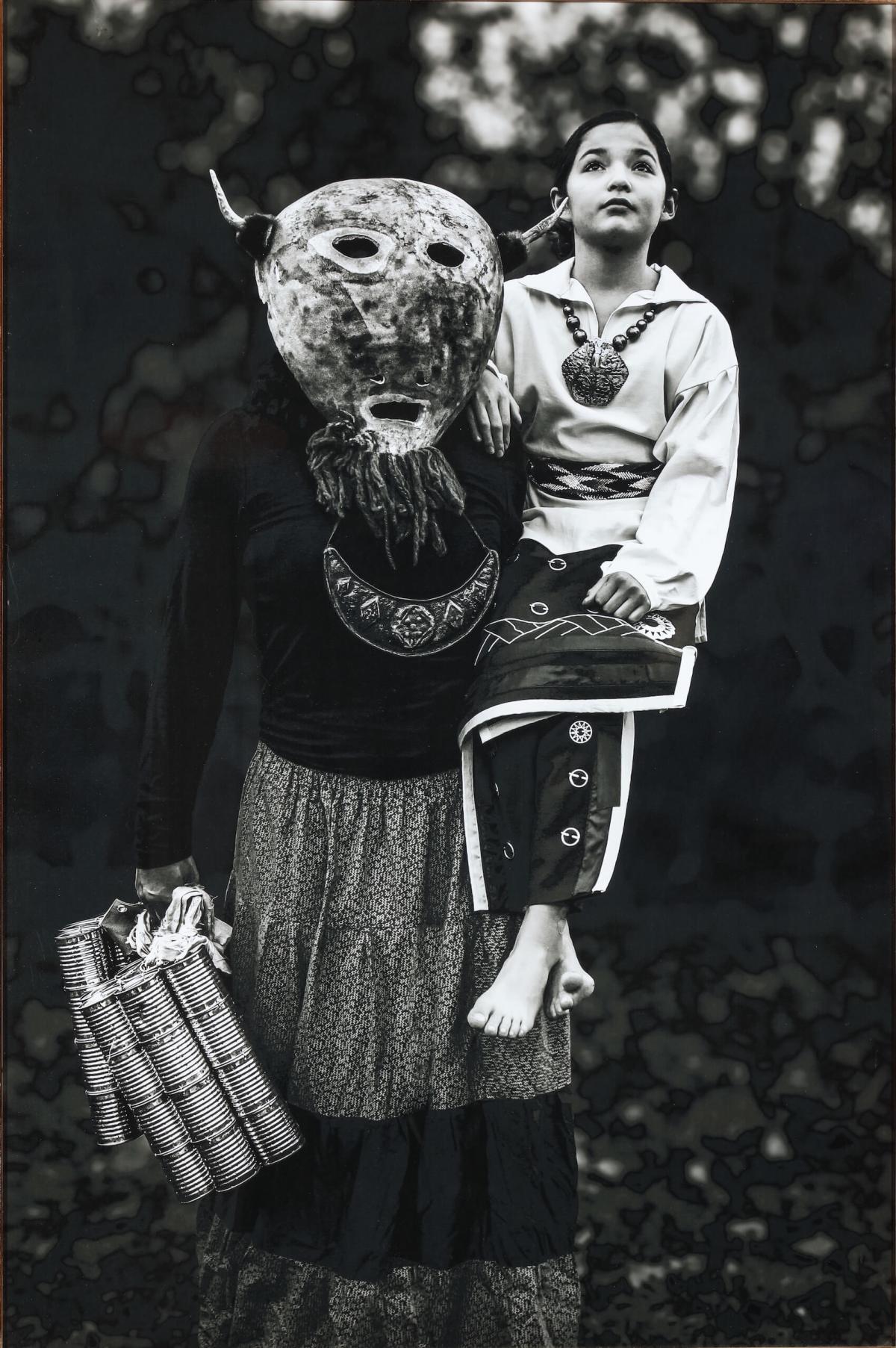Highlights
Madison Hye Long
Eastern Band of Cherokee Indians
Tela Wildoni’s Sunrise, 2020
Madison Hye Long’s photography has gained international attention for its contemporary perspectives of her people, their culture, the natural landscape they inhabit and their presence in the Southeast region. In her work, Long conveys a love of nature that stems from her roots in the mountains of the Cherokee Qualla Boundary in North Carolina. Yet, her images are not mere scenery, they convey real time and space. Such is the case in this photograph, in which the energy of the sunrise, the cycles of nature and panoramic view empower the figure, Tela Wildoni. While rooted in the external landscape, the image conveys Wildoni’s internal experience. The basket suggests her ties with nature, and along with her skirt and leggings, convey pride in her Cherokee heritage. Tela’s shirt speaks of her strength and resilience as a modern Indigenous woman.


